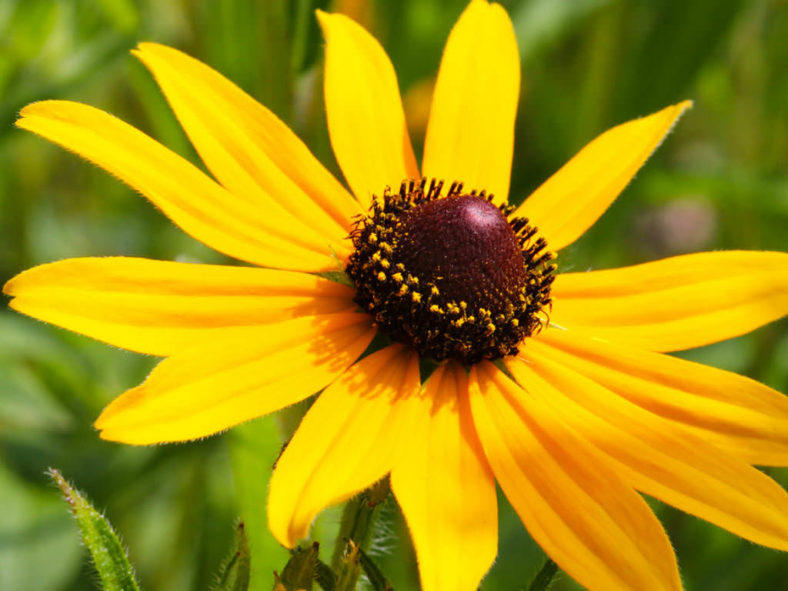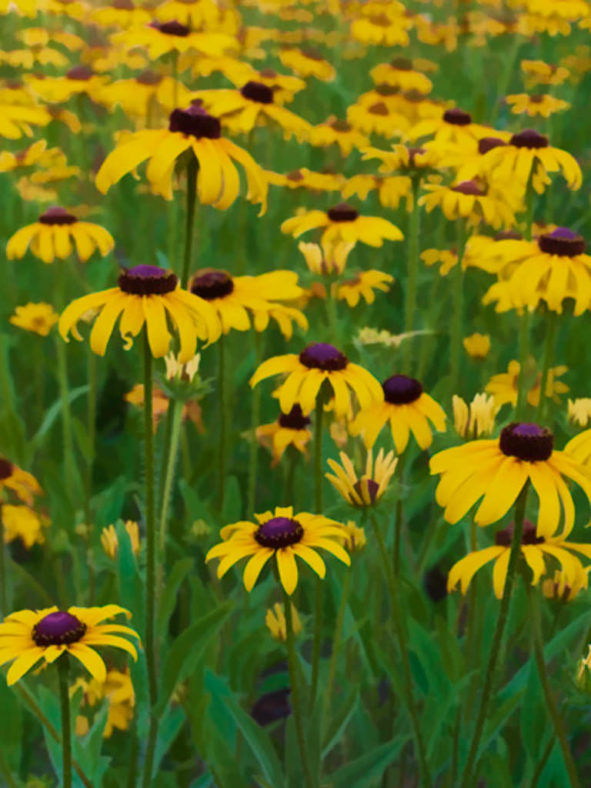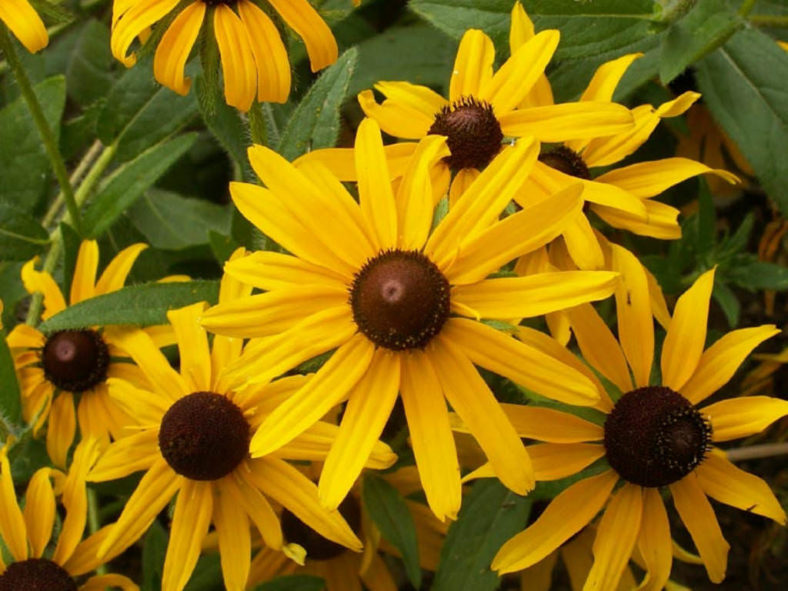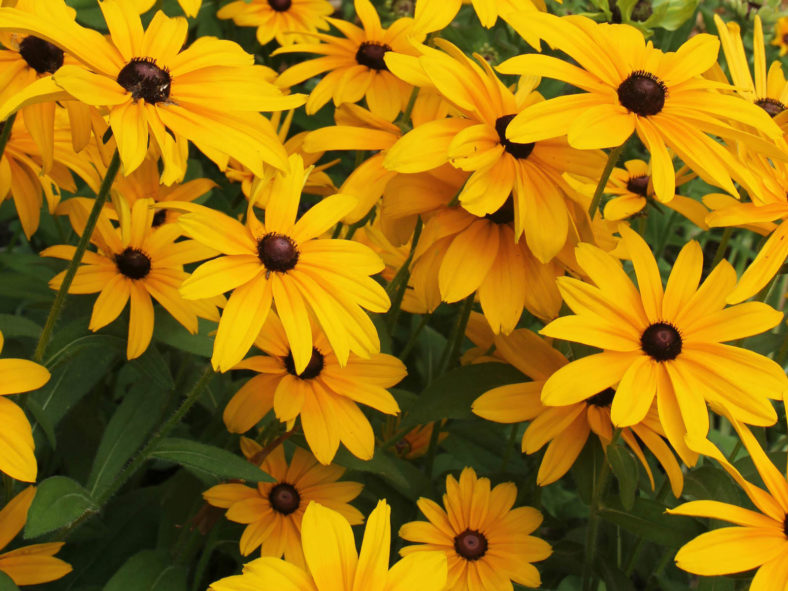Scientific Name
Rudbeckia hirta L.
Common Name(s)
Black Eyed Susan, Brown Eyed Susan, Brown Betty, Gloriosa Daisy, Golden Jerusalem, Poorland Daisy, Yellow Daisy
Synonym(s)
Rudbeckia hirta var. hirta, Rudbeckia hirta f. hirta, Centrocarpha gracilis, Centrocarpha hirta, Coreopsis hirta
Scientific Classification
Family: Asteraceae
Genus: Rudbeckia
Origin
Rudbeckia hirta is native to the Eastern and Central United States.
Flower
Color: Yellow
Bloom Time: Late summer and early fall
Description
Rudbeckia hirta is an upright annual, sometimes biennial or perennial, with stout branching stems. It grows up to 3.3 feet (1 m) tall and 18 inches (45 cm) wide. Leaves are alternate, mostly basal, covered by coarse hair, and up to 7 inches (17.5 cm) long.
The daisy-like composite flowers appear in late summer and early fall. They are up to 4 inches (10 cm) in diameter, with yellow ray florets circling conspicuous brown or black dome-shaped disc florets.
How to Grow and Care
Black Eyed Susan plants are drought-resistant, self-seeding, and grow in various soils. They prefer a neutral soil pH and a full sun to light shade location.
Black Eyed Susan care will often include deadheading the spent blooms of the flower. Deadheading encourages more blooms and a sturdier, more compact plant. It also can stop or slow the spread of the Black Eyed Susan flower, as seeds are contained in the blooms. Seeds may be allowed to dry on the stem for reseeding or collected and dried in other ways for replanting in other areas. Seeds do not necessarily grow to the same height as the parent from which they were collected.
The Black Eyed Susan flower attracts butterflies, bees, and other pollinators to the garden. Deer, rabbits, and other wildlife may be drawn to Black Eyed Susans, which they consume or use for shelter. When planted in the garden, plant the Black Eyed Susan flower near Lavender, Rosemary, or other repellent plants to keep wildlife at bay.
See more at How to Grow and Care for Black Eyed Susan.
Links
- Back to genus Rudbeckia
- Plantpedia: Browse flowering plants by Scientific Name, Common Name, Genus, Family, USDA Hardiness Zone, or Origin
Photo Gallery
Click on a photo to see a larger version.





